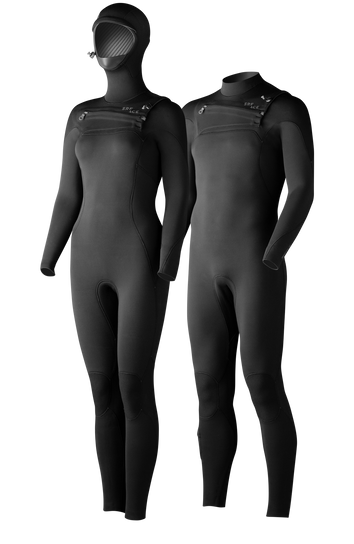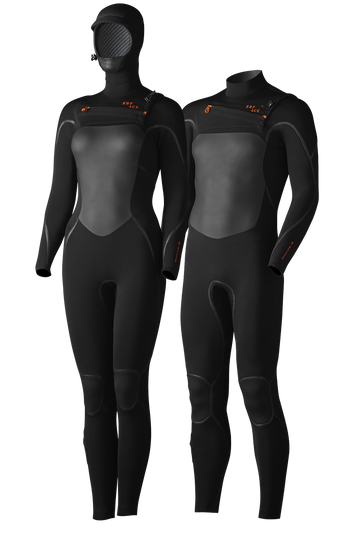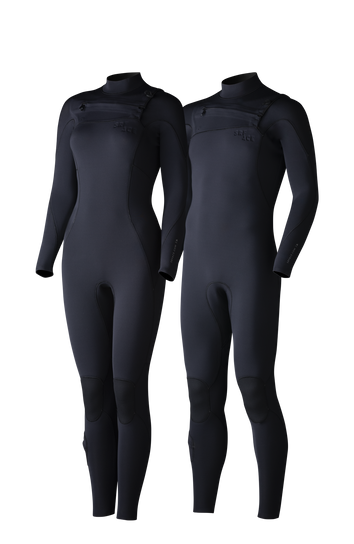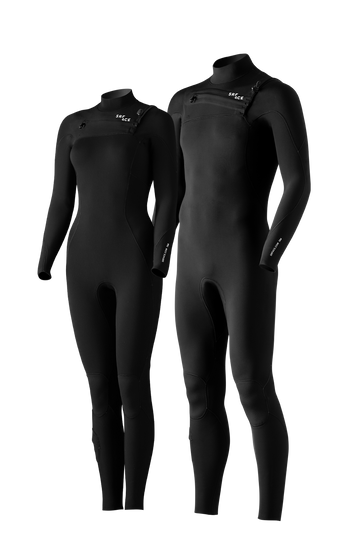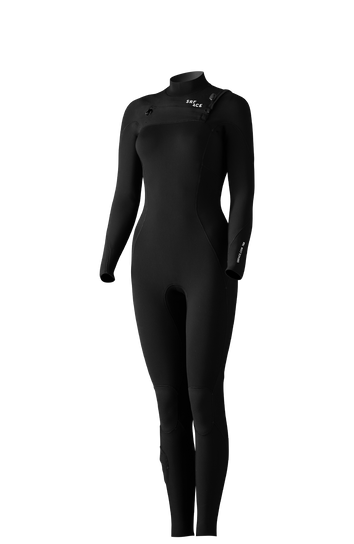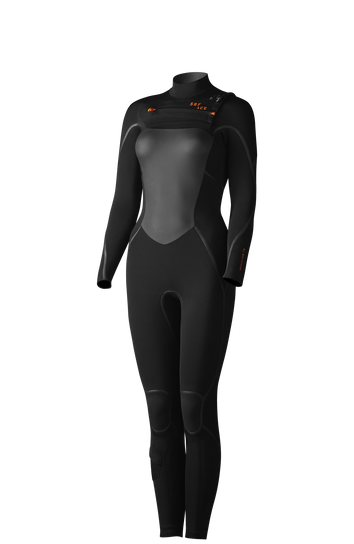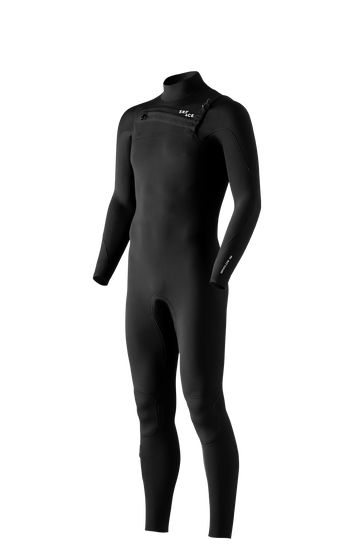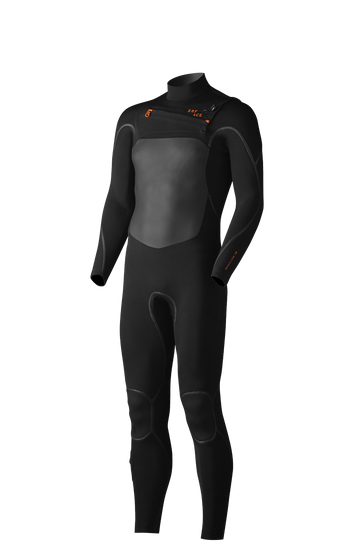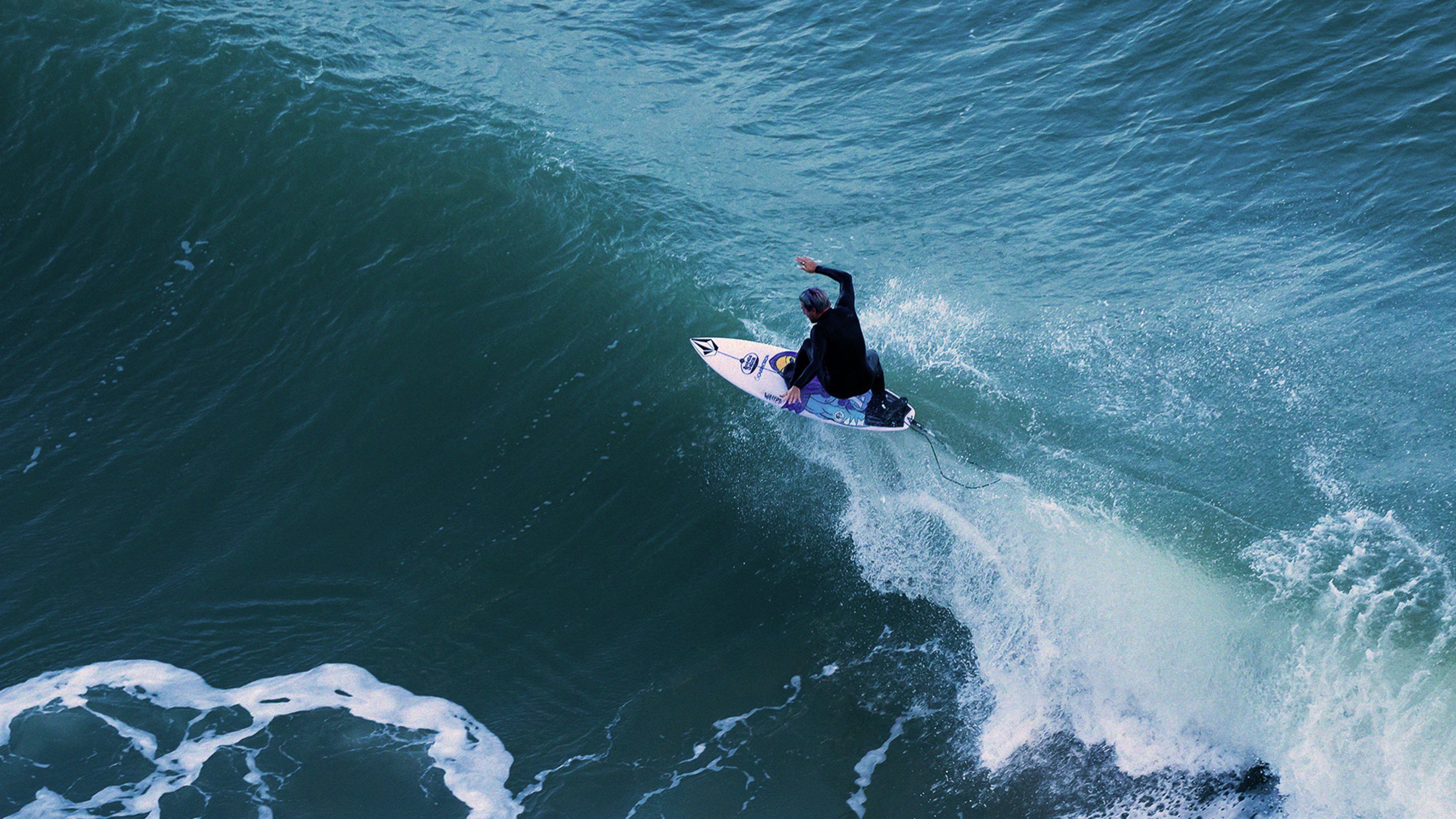
THE COMPLETE GUIDE TO THE SCIENCE BEHIND SINGLE-LINED VS. DOUBLE-LINED NEOPRENE AND WHICH KIND OF WETSUIT YOU SHOULD BUY FOR THIS SEASON
Whether you are a wetsuit geek, or just a person who likes to stay warm while they’re out chasing waves, one thing is for sure – dawny chills are not a vibe. We all know the feeling. You get up early to go for a surf at first light on a cold morning. Waves are firing, life is great. After a few duckdives, you are waiting for the next set, while you notice you are starting to get cold. These dawny chills are usually the result of one of two things – either you have chosen a wetsuit that is too thin for the prevailing temperatures, or your wetsuit was crafted from the wrong neoprene type for the conditions.

The reason you get cold while you’re waiting on a set or sitting on the beach after a surf all comes down to the water droplets trapped in the outside lining of your wetsuit. When your body is less active, your muscles don’t generate much energy and warmth to warm your body up from the inside. This is when it cools down the quickest.
Add to this the effects of thermal conductivity and evaporation, and you have the perfect recipe for getting cold. Here’s why.
THERMAL CONDUCTIVITY

The ins & outs of thermal conductivity
On a wetsuit with a knitted outer surface, cold water droplets get trapped in the yarns, which leaves more time for heat to be pulled out. During this process, warm neoprene conducts its temperature into the cold water droplets. Therefore, heat extraction on the outside cools down your body temperature on the inside.
However, there is more to consider. On top of the thermal conductivity happening between your body, the wetsuit and the elements, the evaporation process of water trapped in the outside lining speeds up the heat loss process even more – especially in windy conditions.

Why evaporation is such a buzzkill
Water evaporation happens when moisture is exposed to air. This process can bring temperatures down rapidly. We all know water evaporation causes clouds to form and makes it rain, but there is more to it.
Evaporation is the process of liquid turning into a gas. Water turns into gas at boiling point (100 °C). But water will also evaporate at room temperature. This happens when water particles that carry higher energy than others escape from the water’s surface.
These high energy particles become gas. They carry more energy than the particles with less energy that stay below the surface as a liquid. The more high-energy particles escape, the more energy they extract from the water that stays behind, thereby cooling it down. That’s why water that started at room temperature can cool down to below the temperature of its surrounding environment.
Similarly, water droplets on the neoprene’s outer surface keep evaporating until it has all become gas and the surface has completely dried up. This rate of evaporation increases when it’s windy or the humidity level is low. Therefore, on windy days, your wetsuit (and your body) will cool down quicker than it would without wind.
HOW WETSUIT MATERIAL PROPERTIES INFLUENCE HEAT LOSS?
Here’s some good news. Thermal conduction and evaporation can be managed for optimal warmth by choosing the right kind of materials. The kinds in question are single-lined neoprene and double-lined neoprene.
Single-lined neoprene explained
 Single-lined neoprene has a smooth outside surface, looks rubbery and is perhaps best-known for its protection against ‘windchill’. The outside surface has been heat-sealed to create the smooth outside skin that makes the raw neoprene foam stronger and water repellent. This version of the material only has a knitted jersey lining laminated to one side, which faces the inside of the wetsuit. This is why it’s called single-lined neoprene.
Single-lined neoprene has a smooth outside surface, looks rubbery and is perhaps best-known for its protection against ‘windchill’. The outside surface has been heat-sealed to create the smooth outside skin that makes the raw neoprene foam stronger and water repellent. This version of the material only has a knitted jersey lining laminated to one side, which faces the inside of the wetsuit. This is why it’s called single-lined neoprene.
Double-lined neoprene explained
 Double-lined neoprene has the same inside lining as single-lined neoprene. The difference is that the outside neoprene foam is not heat sealed, but is instead lined with a knitted jersey lining on the outside as well. The benefits of this lining are that it increases the durability of the neoprene foam and it protects the suit from tearing or getting cut by fingernails and fins.
Double-lined neoprene has the same inside lining as single-lined neoprene. The difference is that the outside neoprene foam is not heat sealed, but is instead lined with a knitted jersey lining on the outside as well. The benefits of this lining are that it increases the durability of the neoprene foam and it protects the suit from tearing or getting cut by fingernails and fins.
Featured wetsuits
THE SCIENCE BEHIND A WARM AND COMFORTABLE WETSUIT
So, potentially, single-lined neoprene could be warmer than double-lined neoprene. Sounds interesting, but how exactly does this work?
In the quest of creating the ultimate wetsuit, the SRFACE product development team took a deep dive into the laboratory to find out how evaporation, insulation and thermal conductivity works and how this trifecta affects your body warmth. We came to some fascinating conclusions.
CAUTION! There’s a lot of technical lab stuff coming up. So if you aren’t all that interested in the scientific nitty-gritty, but would rather just know how it has a bearing on the type of wetsuit you should buy for winter, skip to the end to check out the conclusions. We won’t mind at all (promise!). This is major geek territory.
THE TEST RESULTS…
 The two main single and double-lined thick 5mm winter wetsuit panels were put to the test side by side. Both inside temperatures started at 41°C. A temperature probe measured the inside skin temperatures of both materials. A fan pointed at the objects that were standing in a layer of melting ice water.
The two main single and double-lined thick 5mm winter wetsuit panels were put to the test side by side. Both inside temperatures started at 41°C. A temperature probe measured the inside skin temperatures of both materials. A fan pointed at the objects that were standing in a layer of melting ice water.
At the start of the test, both neoprene panels were sprayed with ice-cold water to represent spray or a duck dive. We measured both materials drop in temperature significantly at the same rate. After about 4-6 minutes, the single-lined neoprene panel becomes completely dry on the outside. The double-lined panel stays wet on the outside surface during the entire 2-hour test.
After 6 minutes we measured the dry single-lined material and found that it cooled down slower than the wet double-lined panel. This process continued during the 2-hour test. After 2 hours, the single-lined material cooled down to 26.8°C, while the double-lined panel dropped to 21.7°C. The temperature difference between the 2 materials kept increasing until the end of the test period, where the difference was 5.1°C total.
An interesting point to note is that the wet double-lined material’s temperature dropped below the air temperature in the lab of 23°C. This can be explained by the evaporation process that extracts energy from the wet surface during the entire test. On the other hand, the single-lined material dried up after 6 minutes, therefore the evaporation process stopped extracting energy and heat from the material, therefore slowing down the cooling process.
TEST WITH WINDCHILL
 The same test as test 1 was repeated, but now without the fan pointed at the objects. This set-up shows the effect that wind has on the evaporation process.
The same test as test 1 was repeated, but now without the fan pointed at the objects. This set-up shows the effect that wind has on the evaporation process.
The comparison between the 2 tests shows that in the case of no wind, both single-lined and double-lined neoprene cool down slower than they did with the fan pointed at them in the previous test.
 In this test, we want to find out if single-lined neoprene remains warmer even if both materials are sprayed wet every few minutes.
In this test, we want to find out if single-lined neoprene remains warmer even if both materials are sprayed wet every few minutes.
As seen in the previous tests, the single-lined neoprene really shows benefits when it gets the chance to dry up. When kept wet it doesn’t show many benefits. Therefore, If you are planning to surf, keep paddling, and never sit on your board drying up for more than about 4 to 6 min, there will be no significant difference in choosing a single or double-lined wetsuit. The same applies to rainy or very humid conditions. Although in these cases single-lined doesn’t perform much better than double-lined neoprene, it’s also not much worse.
SINGLE-LINED: COLD & WINDY
Conditions in which a single-lined neoprene wetsuit performs best would be a cold, windy winter day with a long wave period where you spend most of your session waiting for the perfect wave. A sunny day will benefit single-lined neoprene even further.
DOUBLE-LINED: WARM & NO WIND
On the other hand, the best conditions for a full double-lined wetsuit are summer days with warm water, no wind and short wave periods that make your session more about ducking than waiting. In this case, a single-lined wetsuit doesn’t have sufficient benefits.
Finally, there are cases where there is no real benefit for either of the neoprene types, such as humid or rainy conditions without windchill. However, there are very few situations in which single-lined neoprene performs worse on the Celsius scale than double-lined neoprene.
Choose your wetsuit
OTHER WAYS TO FIGHT THE COLD
Evaporation and thermal conductivity are not the only temperature-related effects that have an impact on your body while surfing but are surely some of the most underrated and fascinating ones.
Fortunately, there are more ways to fight hypothermia. This includes:
1. Paddling. Your muscles work as a heater when you use them. Muscles generate warmth when moving, which affects your body temperature in a positive way. However, you can’t paddle forever without getting tired.
2. Putting it all on black. The sun can warm up your wetsuit too, especially if it is black – the colour that absorbs the most heat.
3. Choosing the right suit for your local water. The most obvious way to stay warm is to choose the right neoprene thickness for your local water temperatures. The thicker the neoprene, the better the insulation and the less of an effect outside elements can have on your body temperature. However, a wetsuit that is too thick can be uncomfortable, or just too hot at times. So choose wisely.
4. Finding the right fit. A well-fitting wetsuit eliminates air bubbles inside your wetsuit that could fill with water. A snug fit is better than a baggy fit, but a wetsuit that is too tight will overstretch, therefore making the neoprene foam thinner. This results in a colder wetsuit too. Find the right fit for your body type here: men / women
THE SHORT OF THE LONG – OUR ULTIMATE CONCLUSION ON SINGLE-LINED VS. DOUBLE-LINED WETSUITS
The warmest winter wetsuit that still remains comfortable and flexible is a wetsuit with the right thickness for your water temperatures. Ideally, invest in a suit with single-lined panels on the chest and back where you need the warmth most, and double-lined panels in areas that need to be strong and flexible, such as the arms, legs, knees, etc.
If you are looking for a warm water summer wetsuit, hypothermia might not be your main concern. In this case, a flexible and strong fully double-lined wetsuit might be your weapon of choice.

Surfers in front image: @ninamoerdijk @bodirkmaat
Photographer: @janbijl

Ready to surf?
Shop from €159



